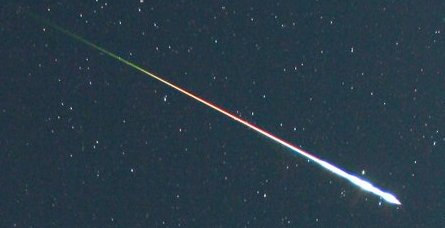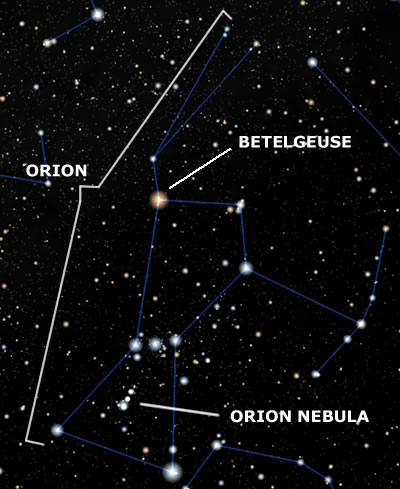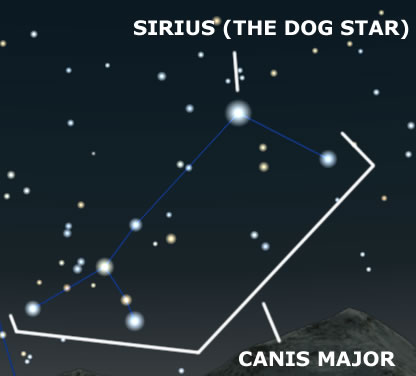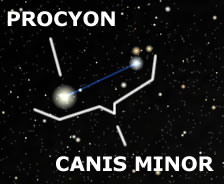Archive for the ‘Meteors’ Category
Lyrid Meteor Shower
This year the annual Lyrid Meteor Shower should be a great spectacle as the Moon will not be lighting up the sky at all. As long as you are out in the country and have the luck of a clear sky, there should be a perfect view of the meteors. Even in a lighter sky, it should be a good sight.
The height of the shower falls on the night of the 21st April with the average number of meteors spotted per hour being at about 10-20, but it has been known to reach up to 100 meteors per hour! On the nights around the peak night, you should still be able to see the occasional meteor. I had a look last night but unfortunately didn’t see any, mainly because the area of the sky where they seem to originate from (The constellation Lyra near the bright star called ‘Vega’.) was too low on the horizon and was hidden by trees.
The Lyrids are thought to be sand grain sized debris from a passing comet. When they hit the Earth’s atmosphere, they burn up, causing the light streaks in the Sky. In the past, fireballs have been seen hurtling across the sky during this meteor shower. They are thought to originate from comet Thatcher that has an orbit of 416 years with its path staying practically the same each time is passes through. This means the debris is always in the path of the Earth which is why it is an annual event.
So fingers crossed everyone gets to see a good few meteors! 😉
The International Space Station and Perseid Meteors
During the month of August the ISS (International Space Station) could be seen in the sky during most evenings. The first time that I saw it was on Sunday 21st August when my family and I were on holiday in Weymouth. I wasn’t sure what to expect really as I didn’t know how bright it was going to be and how easily it could be made out from the rest of the stars in the sky. I had a NASA app on my phone which gave the general direction of where the ISS would be coming from and the length of time it would be viewable in the sky, but I was still worried that I wouldn’t see it.
Whilst on the look out, I was scanning the sky generally for constellations and satellites and to my amazement saw the best two shooting stars I had ever seen in my life. These were obviously not actual shooting stars but were two meteors from the Perseid Meteor Shower. This was especially great as the height of the meteor shower was a couple of weeks before, so these would have come from the tail end of the passing shower and were totally unexpected. They were so bright and the trails in the sky were long and wide. It was brilliant to see and completely lucky that I was looking at that area of the sky at the right time. I knew these were part of the Perseids as their general direction originated from towards the constellation Perseus, and from my position, they shot past in front of Cassiopeia as well.
The image below is the best image I can find that shows almost exactly what I saw in the sky.
Not long after, I suddenly spotted a very bright light in the sky coming from the direction where the ISS was meant to originate from. The object was moving as well which meant that what I was seeing was the ISS, and it was bang on time (the app gives the time of when the ISS becomes visible in the sky). Where I was watching was in the direct path of the ISS, so it flew directly over the top of me which was great to see! Looking at it you could just make out the solar panels and the general shape which made it an amazing sight. It lasted for about 4 minutes before it passed by and faded to black as it moved away from the sun (which was reflecting off the panels which is why it was visible in the sky). After seeing this, I was out most evenings when the sky was clear to view the International Space Station pass overhead, and I would recommend the viewing to anyone as it is a great thing to experience and puts a lot of things into perspective. Unfortunately, now we are in mid-September, the ISS has moved out of viewable range in the evenings although it can be seen for a fleeting moment during the early hours of the morning on occasions.
The sighting of the International Space Station also cleared up a little mystery from earlier in the year when I was out at Mount Batten in Plymouth and saw a very bright object move across the sky at a fairly brisk pace. At the time I wasn’t sure what it was and thought it may have actually been a UFO, but after seeing the ISS during the Summer, I can now say that what I saw in March was the ISS travelling across the sky above us. Am glad this has been cleared up although it would have been nice if it was a UFO! 😉
Perseid Meteor Shower 2011
The Perseid Meteor Shower (the ‘Perseids’) will reach its peak activity on Saturday 13th August this year. Unfortunately, this coincides with a full moon this year which will make the sky so bright that only the closest and largest meteors will be seen. But don’t ignore it for this year, as it will still be possible to view them!
The Perseids originate from the constellation Perseus, but actually have nothing to do with any of the stars in the constellation. They are actually rock fragments left over from the comet Swift-Tuttle when it last flew near the Sun. So if you can find the constellation of Perseus in the night sky, you will know where to look for the meteors streaking across the sky. However, don’t just look at the constellation, look at the area around it as you will still be able to see them as they only originate from Perseus.
Let’s hope for a clear sky and good viewing to everyone!
Orion Nebula, Sirius, Betelgeuse, Procyon and more
After several weeks of bad weather and tiredness due to busy work and a pregnant wife, I have been able to go out and view the Night Sky again.
A lot has changed since I last viewed the stars. Jupiter has now disappeared (from my viewing angle) and Orion has made its way along the night sky and is now settling in the South to South East area. The Plough has also come in to view and can be seen directly from my back garden towards the East.
The first thing I wanted to have a look at was the star Betelgeuse as Professor Brian Cox had said that it could turn into a Red Giant at any time. It would be amazing to see that happen in the sky and would be one of the highlights of my life. Unfortunately, the star was still looking the same through my binoculars and telescope, but I will keep checking it every clear night.
I also wanted to see if I could get a better view of the Orion Nebula which lies amidst the ‘Sword’ in the Orion Constellation. I had a look through my binoculars and telescope and could see a lot more than with the naked eye. What I could see was a blurry amount of light which is quite distinct compared with the rest of the space around it. It was exciting to be able to make this much out but I look forward to maybe getting a better look with a more powerful telescope when I can afford one. It was still a marvel to look at for me anyway.
Whilst I was looking at the Orion Nebula through the telescope, either a Satellite or a Meteor shot across the viewer. I’m not 100% sure what it was but it didn’t have any lights which can sometimes be seen on a satellite so I am leaning towards it being a meteor. It was so far away in the sky that it wouldn’t have been viewable by the naked eye. Perhaps someone can tell me what it was? I spotted it at about 8pm last night (24th March 2011).
There was one star in the sky that my wife and I always wondered what it was as it looked like a Helicopter or an Aeroplane suspended in the sky, with its lights flashing red and blue. After taking a closer look using our equipment and consulting the Internet, we found it to be Sirius (also known as the Dog Star and part of the constellation ‘Canis Major’). It is the brightest star in the sky and the red and blue twinkling that it gives off is due to its light hitting the atmosphere of the Earth and refracting in the gases. We are both glad that we now know what it is!
The final area of the Sky that I had wanted to take a look at was the bright star to the left of Orion. This star is called ‘Procyon’ and forms part of the constellation ‘Canis Minor’. This is also a very bright star, although obviously not as bright as Sirius. I couldn’t see much more detail through the telescope which was a shame, but at least I now know its name.
UFO or Mir Space Station
I hope someone can help me with this?
I was out at Mount Batten in Plymouth on the 8th January 2011 taking a look at the stars and sky when I noticed a light streaking across the sky. It was coming from a South Easterly direction, moving North Easterly, at a very fast rate. I could see it in the sky for a good 30 seconds until it got past the Moon and suddenly disappeared. I’m quite sure that it wasn’t a shooting star or a meteor as this seemed completely different, so i’m hoping someone knows what this may have been?
I did a bit of research afterwards and found that you can see the Mir Space Station in the sky on occasions and when the sun hits it, it looks like a bright light shooting across the sky. I’m not 100% convinced though.
Can anyone shed some light on this please?




